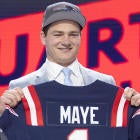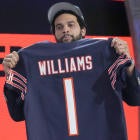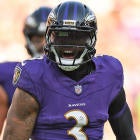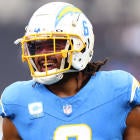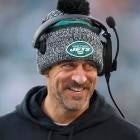The NFL Competition Committee has a bevy of potential changes to the game to consider this week as it continues to meet in Naples, Florida, before ultimately making suggestions for owners to vote on later this month. I can only hope that when these measures go before ownership at the spring meeting there is a concerted effort made to close lingering loopholes in the system in place to detect and determine head and neck injuries.
If the Super Bowl, and the sight of a staggering and apparently dazed Julian Edelman staying in the game, taught us anything, it's that even with the world's eyes on the game there are still instances where players are not potentially being saved from themselves. Edelman took a nasty hit from Kam Chancellor in the fourth quarter that left him dazed but he never left the field. He went on to catch three more balls for 33 yards, including a game-tying touchdown.
There remains significant work to be done at the highest levels of the NFL to ensure safer conditions; Troy Vincent, the league's VP of football operations, has written and talked about the import of such initiatives and now is the time to put them into practice.
Vincent, in providing a preview on the Competition Committee meetings on the NFL's Football Operations website over the weekend, outlined the various proposals being discussed. They include tweaking the extra point, modifying what is reviewable on instant replay and possibly eliminating the chop block.
Medical timeouts
But to me, the most significant of them all was the potential introduction of a medical timeout where an independent third party would be empowered to stop the game and require a player to undergo a concussion test. This is a no brainer -- excuse the unfortunate pun -- and should go into place for the 2015 season, while a series of the other proposals being discussed would nicely dovetail with this move to enact real change to make the game safer.
Anyone able to watch a majority of the games each week -- and thankfully we have big monitors on every game at the green room at The NFL Today studios -- will see scenarios where a player seems to be on the field despite absorbing a big hit to the head and neck area. At times it's staggering how disoriented a player appears to be, yet he stays in the game and/or is quickly back in the game without enough time passing to adequately assess his cognitive status. And while I understand that nothing is perfect, the system as currently in place, seems to be far less than perfect.
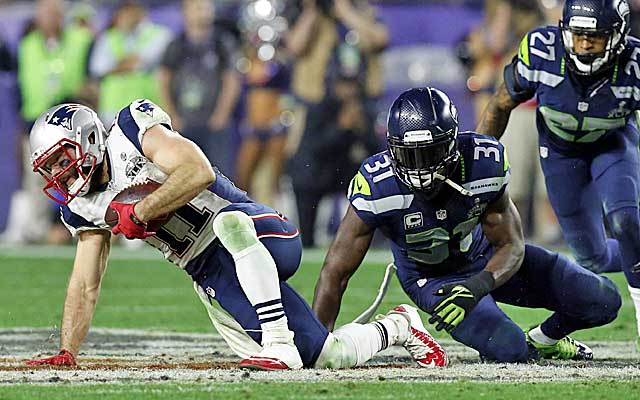
The case of Chargers safety Jahleel Addae -- who returned to a Thursday night game in October numerous times and then was later diagnosed with a concussion that would keep him out for weeks -- is one that I won't soon forget, and one that seemed preventable with a beefed-up system.
Both the NFL and NFLPA investigated the situation and, according to sources, the pressbox spotter at the game missed some obvious signs of distress that were not as visible to team medical personnel on the sidelines. The team's medical staff was not found culpable, but not everything is clear through the maze of bodies on the sidelines and on the field of play. The spotters are hired jointly by the league and the union and, if nothing else, raising the standards of medical acumen required for that personnel seems like a good idea to me. It would go hand-and-hand with helping to further boos medical personnel's ability to enact real-time change on the game, via a medical timeout.
As Vincent wrote on the website: "A medical timeout could be called when a spotter or an independent person unaffiliated with either team on the sideline believes a player is in need of medical attention, but he remains in the game. What is the practical application of such a timeout? What are the processes and procedures that would be in place to ensure both competitive balance and the health of the player? -- these are questions that should be considered."
Better spotters, better communication
I don't think it would take all that elaborate of a plan to make this work. Give the spotters a device that signals the head official -- I readily admit my lack of technological sophistication but given the elaborate communications ongoing in this era of football this doesn't seem like a stretch -- to immediately stop the game. The spotter relays the player he or she believes is in need of assistance and they are given a concussion test by a third-person independent sideline doctor hired jointly by the NFL and NFLPA to staff each game. The player is ushered off the field in a careful and timely manner and then play resumes while the concussion test is administered.
Create a review process to oversee the efficiency and accuracy of both the spotter and the sideline personnel. Combined with some other options already under discussion by the Competition Committee, we might have fewer incidents like Addae in the future (not to imply they are common, but even quasi-regular seems like a low threshold given the weight this issue carries).
Expanding game-day rosters
Vincent states the league is considering expanding the game-day roster for Thursday night games. I still can't understand why such a novel concept isn't already in place.
Forget game-day inactives and make all 53 players active for every game. Eliminate the roster pinch and the concern in the back of any coach's mind about not having enough players to fill in while someone is being evaluated on the sidelines. Having 45 active players on game day always seemed arbitrary to me anyway. The teams are paying all 53 on game day -- let them be dressed and present and ready to go. And, hey, I'd be all for expanding rosters to say 57, and if you want make four players inactive each week while 53 dress, so be it. With the teams and the league more savvy to head and neck injuries that may have been downplayed in the dark ages, then put more muscle behind the movement and give teams greater roster flexibility to deal with them.
Establishing an IR like baseball
And, while we're at it, let's add a new injury designation to provide more flexibility for concussed players. Establishing an IR -- Designated To Return -- was a nice step to provide a cushion for teams to use a player later without losing him for the season (why only one designation per year, though?), but like baseball the NFL should add a concussion-specific designation that allows a player to not count against the active roster for any amount of time – one week, two weeks, a month, whatever – while he remains in the concussion protocol. Call it The Concussion Exempt List, or whatever you want. So his status would not impact the inactives, assuming we still have them, and would allow teams to have enough players to fully practice in the interim.
Vincent said the Competition Committee is discussing, "Continuing to enhance our concussion protocol," and the more independent voices involved in that, on the sidelines, the better. The committee may recommend adding an eighth official, as well he wrote, and with the speed of the game constantly ramped up and the NFL looking for ways to continually protect defenseless players, this can't be a bad thing either, assuming the official himself is not placed in an area that puts him or players at increased risk for collisions.
The more that team doctors and personnel can be removed from the process of concussion detection and testing, the better. The league should be aiming for the best and brightest third parties to serve in these roles. At the same time it should also be easing a potential roster crunch that comes with players being removed from games potentially at a greater degree.
As Vincent put in on the website post: "We have two main objectives when considering changes to the rules: protecting our players from unnecessary risk and providing clarity and consistency in the way we administer the game." The measures I support seem egalitarian enough, and should provide better consistency and results.
The stakes of the game, the importance of the particular drive, the import of the player to his team, the fact it's the playoffs -- that shouldn't make a difference. And as we watched the postseason, at times it seemed like it did, whether it be Edelman in the Super Bowl or Russell Wilson in the NFC title game.
That's not good enough, and hopefully it won't be for much longer. Empower the outside experts, marginalize the role of the team, and let's see what happens. Hopefully, a revised process of some sort takes shape in Naples and comes to fruition in Scottsdale, Ariz., in late March when the owners meet. The more proactive, the better.













